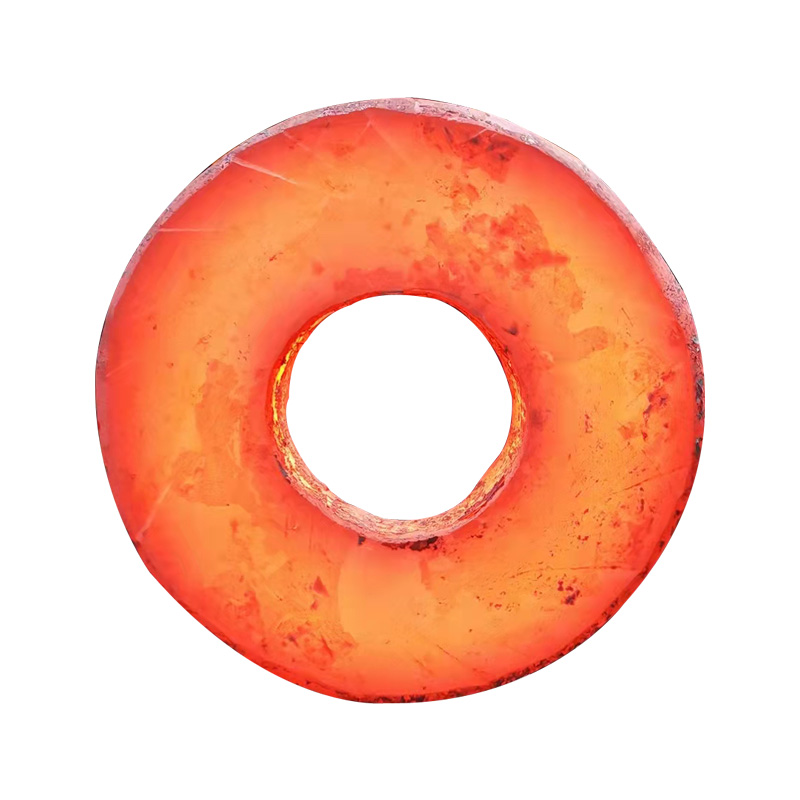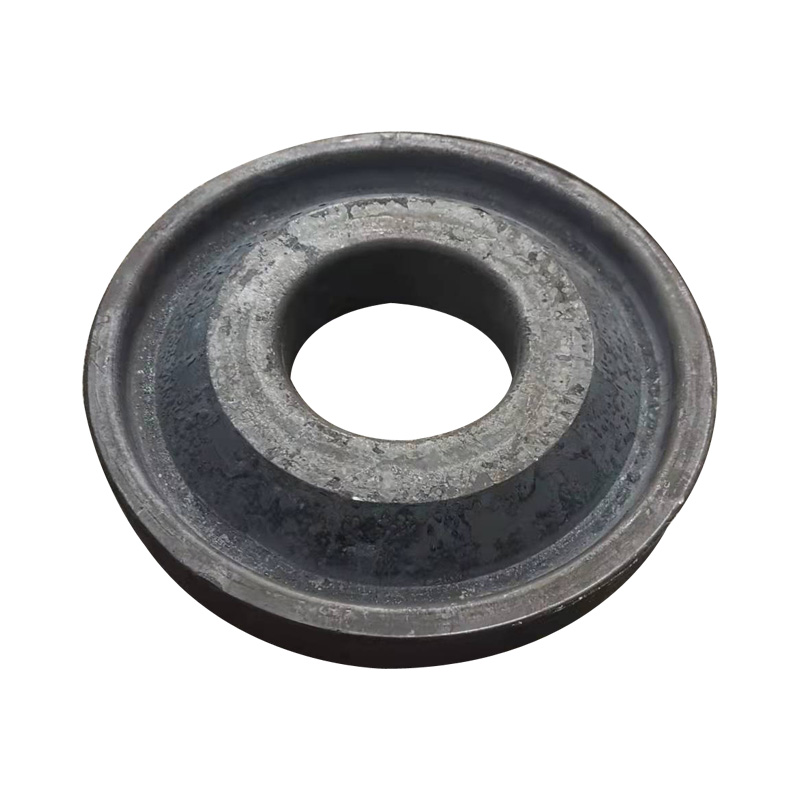Ultrasonic detection of large ring forgings
2022-05-26
Ultrasonic testing are the main problems of large ring forgings both the detection sensitivity and detection blind area, forging the detection sensitivity of different depth to achieve the requirements of technical conditions, detection blind area should be less than on the surface of the forging machining allowance, but they need to consider to have the difficulty at the same time, the surface of the ultrasonic detection blind area along with the wave of width increases with the increase of flaw detector, The width of initial wave increases with the increase of sensitivity. For large-size (300mm ~ 400mm) forgings, when ultrasonic detection reaches the equivalent of 1.2mm flat bottom hole, the width of initial wave has reached tens to hundreds of millimeters, which is difficult to meet the requirements of machining allowance of several millimeters. Therefore, It is difficult to achieve the requirement of sensitivity and blind spot detection in the detection of large size forgings.
Large size forgings can be considered in depth partition detection, that is, on the premise of meeting the surface blind area, the combined performance of a probe of the measurement instrument will be able to meet the detection sensitivity requirements of the maximum detection depth as the surface area, in order to ensure that the detection of the surface area to meet the detection sensitivity and blind area requirements, It is necessary to make the reflected wave height of flat bottom hole equal to the processing allowance and the maximum depth of surface area reach the reference wave height. The surface area is referred to as the depth area below. In order to ensure that the detection of the depth area meets the requirements of detection sensitivity and blind area, it is necessary to make the reflected wave height of the flat bottom hole equal to the depth area and the maximum depth of the surface area reach the reference wave height.
According to the above ideas, ultrasonic testing of large size and complex forgings can be solved for large ring forgings. Considering that the blind area of water immersion method is superior to contact method and is not sensitive to the surface roughness and shape of forging, water immersion method can be used to detect the surface area. The sensitivity of contact method is better than that of water immersion method, so contact method or water immersion method to improve the sensitivity can be considered to detect the depth area. The combination of water immersion method and contact method can be selected according to the specific situation on the premise of meeting the sensitivity and blind area.
Large size forgings can be considered in depth partition detection, that is, on the premise of meeting the surface blind area, the combined performance of a probe of the measurement instrument will be able to meet the detection sensitivity requirements of the maximum detection depth as the surface area, in order to ensure that the detection of the surface area to meet the detection sensitivity and blind area requirements, It is necessary to make the reflected wave height of flat bottom hole equal to the processing allowance and the maximum depth of surface area reach the reference wave height. The surface area is referred to as the depth area below. In order to ensure that the detection of the depth area meets the requirements of detection sensitivity and blind area, it is necessary to make the reflected wave height of the flat bottom hole equal to the depth area and the maximum depth of the surface area reach the reference wave height.
According to the above ideas, ultrasonic testing of large size and complex forgings can be solved for large ring forgings. Considering that the blind area of water immersion method is superior to contact method and is not sensitive to the surface roughness and shape of forging, water immersion method can be used to detect the surface area. The sensitivity of contact method is better than that of water immersion method, so contact method or water immersion method to improve the sensitivity can be considered to detect the depth area. The combination of water immersion method and contact method can be selected according to the specific situation on the premise of meeting the sensitivity and blind area.


X
We use cookies to offer you a better browsing experience, analyze site traffic and personalize content. By using this site, you agree to our use of cookies.
Privacy Policy



